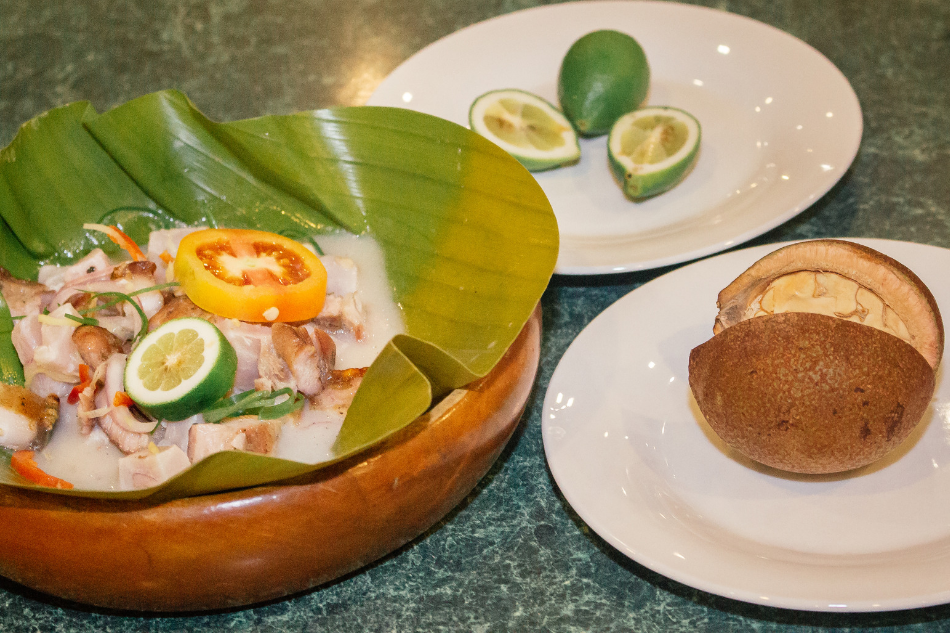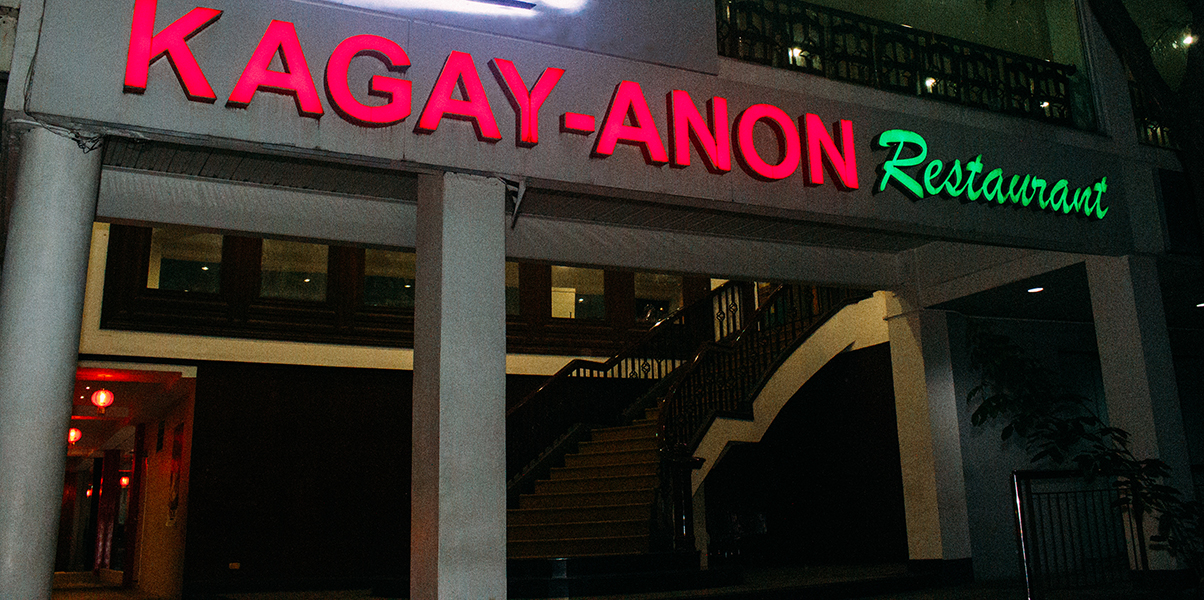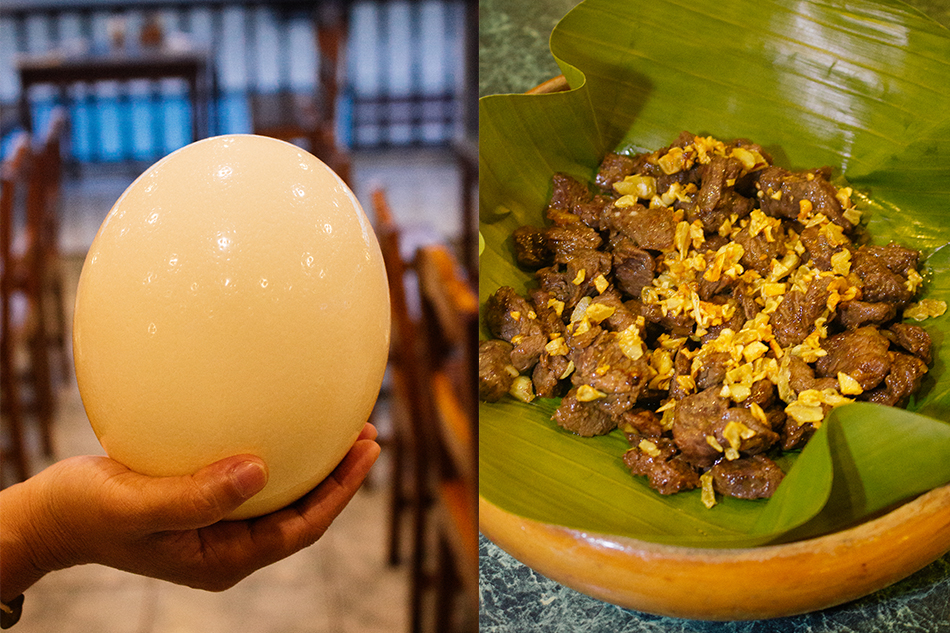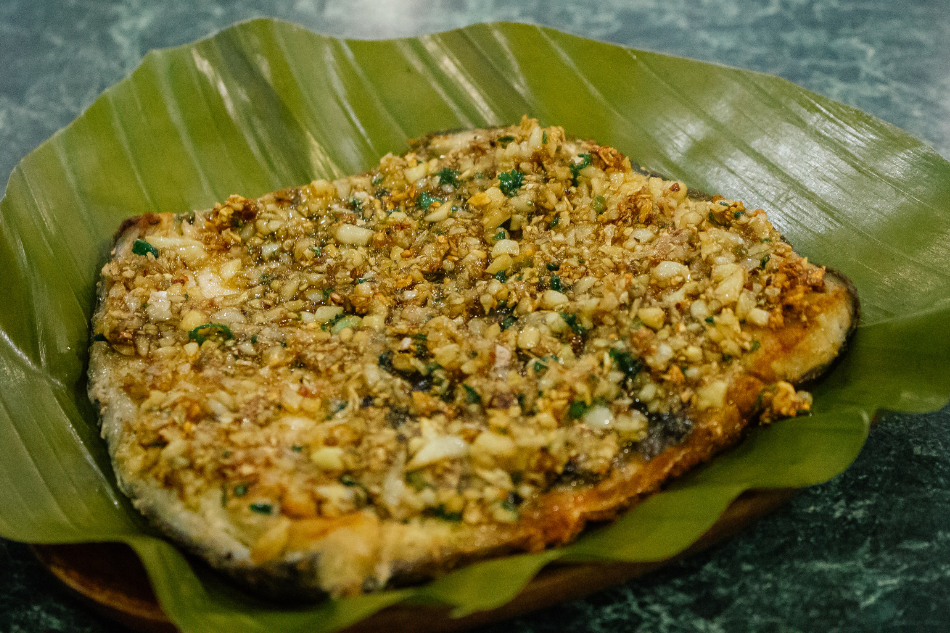The kinilaw in this Cagayan de Oro resto has two unique ingredients | ABS-CBN
ADVERTISEMENT

Welcome, Kapamilya! We use cookies to improve your browsing experience. Continuing to use this site means you agree to our use of cookies. Tell me more!
The kinilaw in this Cagayan de Oro resto has two unique ingredients
The kinilaw in this Cagayan de Oro resto has two unique ingredients
Ces Oreña-Drilon
Published Jun 26, 2019 07:41 PM PHT
|
Updated Jun 26, 2019 09:18 PM PHT
My first taste of kinilaw in Northern Mindanao in the early 90s still lingers in the memory of my palate. It left me craving for its unique flavor so unlike other versions I’ve tried in Luzon and the Visayas. Luckily, my news assignments have brought me to the region often. The taste of the dish enhanced my discovery of a place vastly removed from the rest of the archipelago. Their version of kinilaw (which has been compared to ceviche) had a unique fragrance and came with a thin, cloudy flavorful sauce (one could easily mistake it for coconut milk, but it wasn’t) that was light and refreshing. I would spoon the sauce to my mouth way after the fish had long been eaten. Needless to say, I was smitten!
My first taste of kinilaw in Northern Mindanao in the early 90s still lingers in the memory of my palate. It left me craving for its unique flavor so unlike other versions I’ve tried in Luzon and the Visayas. Luckily, my news assignments have brought me to the region often. The taste of the dish enhanced my discovery of a place vastly removed from the rest of the archipelago. Their version of kinilaw (which has been compared to ceviche) had a unique fragrance and came with a thin, cloudy flavorful sauce (one could easily mistake it for coconut milk, but it wasn’t) that was light and refreshing. I would spoon the sauce to my mouth way after the fish had long been eaten. Needless to say, I was smitten!
It was not until I ate in the famed Kagay-Anon restaurant in Cagayan de Oro later on that I discovered the secret ingredients. The waiters were so accommodating, bringing out the ‘secrets’ from the kitchen. And it was no wonder nothing in Manila could ever capture the unique flavors because some of the ingredients I had never seen before, like the sua and the tabon-tabon.
It was not until I ate in the famed Kagay-Anon restaurant in Cagayan de Oro later on that I discovered the secret ingredients. The waiters were so accommodating, bringing out the ‘secrets’ from the kitchen. And it was no wonder nothing in Manila could ever capture the unique flavors because some of the ingredients I had never seen before, like the sua and the tabon-tabon.
You may also like:
You may also like:
- Revisiting old Taal through its ancestral homes and heirloom recipes
- From curacha to lamb lechon, Isabela is definitely more than just their pancit
- From tamales to morcon: how Pampanga’s sons are keeping the hometown cuisine alive
- A reintroduction to Vigan by way of its food
- How to eat your way through Cavite, birthplace of Philippine independence
- Revisiting old Taal through its ancestral homes and heirloom recipes
- From curacha to lamb lechon, Isabela is definitely more than just their pancit
- From tamales to morcon: how Pampanga’s sons are keeping the hometown cuisine alive
- A reintroduction to Vigan by way of its food
- How to eat your way through Cavite, birthplace of Philippine independence
In a recent visit to Cagayan de Oro, I made sure to make a stop at the Kagay-anon which, at 22 years, is a virtual institution in the city. Fortunately, its manager of 20 years, Russel Yee, was there to explain some of their specialties to us, beginning with the famous kinilaw.
In a recent visit to Cagayan de Oro, I made sure to make a stop at the Kagay-anon which, at 22 years, is a virtual institution in the city. Fortunately, its manager of 20 years, Russel Yee, was there to explain some of their specialties to us, beginning with the famous kinilaw.
The first important ingredient is the coconut vinegar—not just any coconut vinegar but the kind freshly extracted from the tree sap and only slightly fermented. For the kinilaw, they would use tuba or native coconut vinegar which they called ‘bahal.’ “Hindi pa talaga siya lutong suka, kumbaga parang namumukadkad, parang nagdadalaga pa, “ explains Yee. “Kapag hindi masarap yung tuba, hindi din talaga masarap yung kinilaw. Thus the fish is not overly ‘cooked’ in the acid of the vinegar.
The first important ingredient is the coconut vinegar—not just any coconut vinegar but the kind freshly extracted from the tree sap and only slightly fermented. For the kinilaw, they would use tuba or native coconut vinegar which they called ‘bahal.’ “Hindi pa talaga siya lutong suka, kumbaga parang namumukadkad, parang nagdadalaga pa, “ explains Yee. “Kapag hindi masarap yung tuba, hindi din talaga masarap yung kinilaw. Thus the fish is not overly ‘cooked’ in the acid of the vinegar.
ADVERTISEMENT
Next is the tabon tabon which resembles a chico fruit but is firmer and looks more like a nut. “Yung tabon tabon i-grate yan siya, mixed sa tuba and then drained,” Yee says, mixing her English with the Cagayan way of speaking. “Too much tabon tabon hindi din maganda, magiging mapait. Pero yung tabon tabon nakakawala din ng langsa. Yun ang difference sa kinilaw ng Cagayan de Oro kasi yung iba walang tabon tabon.”
Next is the tabon tabon which resembles a chico fruit but is firmer and looks more like a nut. “Yung tabon tabon i-grate yan siya, mixed sa tuba and then drained,” Yee says, mixing her English with the Cagayan way of speaking. “Too much tabon tabon hindi din maganda, magiging mapait. Pero yung tabon tabon nakakawala din ng langsa. Yun ang difference sa kinilaw ng Cagayan de Oro kasi yung iba walang tabon tabon.”
For the raw fish, Kagay-Anon serves only the freshest malasugue or marlin from General Santos City. Once it is sliced, the fish is “washed” with the coconut vinegar or tuba. The juice of the sua is then added, along with other seasonings. The sua is unique to Northern Mindanao and has a distinct aroma. Its plant is similar to the kaffir lime used in Thai cuisine but has a milder, less aggressive flavor and a lovely bouquet.
For the raw fish, Kagay-Anon serves only the freshest malasugue or marlin from General Santos City. Once it is sliced, the fish is “washed” with the coconut vinegar or tuba. The juice of the sua is then added, along with other seasonings. The sua is unique to Northern Mindanao and has a distinct aroma. Its plant is similar to the kaffir lime used in Thai cuisine but has a milder, less aggressive flavor and a lovely bouquet.
Kagay-anon also serves its trademark sinuglaw, claimed by Cagayan de Oro as its own. It’s a mixture of grilled pork and kinilaw. Yee explains its simple origins: “It started na may nag-order ng kinilaw then sinugba and they started experimenting. Ang sarap pala. Kaya sinungba plus kinilaw became sinuglaw.
Kagay-anon also serves its trademark sinuglaw, claimed by Cagayan de Oro as its own. It’s a mixture of grilled pork and kinilaw. Yee explains its simple origins: “It started na may nag-order ng kinilaw then sinugba and they started experimenting. Ang sarap pala. Kaya sinungba plus kinilaw became sinuglaw.
Another signature dish is the pinakbet. Although Ilokano in origin, Kagay-anon gives the dish its own touch — it is served in a whole kalabasa.
Another signature dish is the pinakbet. Although Ilokano in origin, Kagay-anon gives the dish its own touch — it is served in a whole kalabasa.
The restaurant’s founder is Francisca Limketkai of the prominent Cagayan de Oro family. She manages several of the family’s businesses from boutiques to a gasoline station, but she’s also a whiz in the kitchen. Many chefs from Manila, like Myrna Segismundo and Claude Tayag, have made their pilgrimage to Kagay-anon.
The restaurant’s founder is Francisca Limketkai of the prominent Cagayan de Oro family. She manages several of the family’s businesses from boutiques to a gasoline station, but she’s also a whiz in the kitchen. Many chefs from Manila, like Myrna Segismundo and Claude Tayag, have made their pilgrimage to Kagay-anon.
Among the family’s businesses is an ostrich farm, hence another house specialty—ostrich salpicao.
Among the family’s businesses is an ostrich farm, hence another house specialty—ostrich salpicao.
Returning to the restaurant after several years felt like visiting a long lost friend: the same wait staff was there, the banana leaf lined plates, and the simple but warm ambience. Even some of the chefs who pioneered the restaurant are still in the Kagay-anon kitchen, says Yee.
Returning to the restaurant after several years felt like visiting a long lost friend: the same wait staff was there, the banana leaf lined plates, and the simple but warm ambience. Even some of the chefs who pioneered the restaurant are still in the Kagay-anon kitchen, says Yee.
For all these reasons, this restaurant is a must-go-to for any Cagayan de Oro visitor.
For all these reasons, this restaurant is a must-go-to for any Cagayan de Oro visitor.
Book your MNL-CGY flight on www.airasia.com.
Photographs by Andre Drilon
ADVERTISEMENT
ADVERTISEMENT










